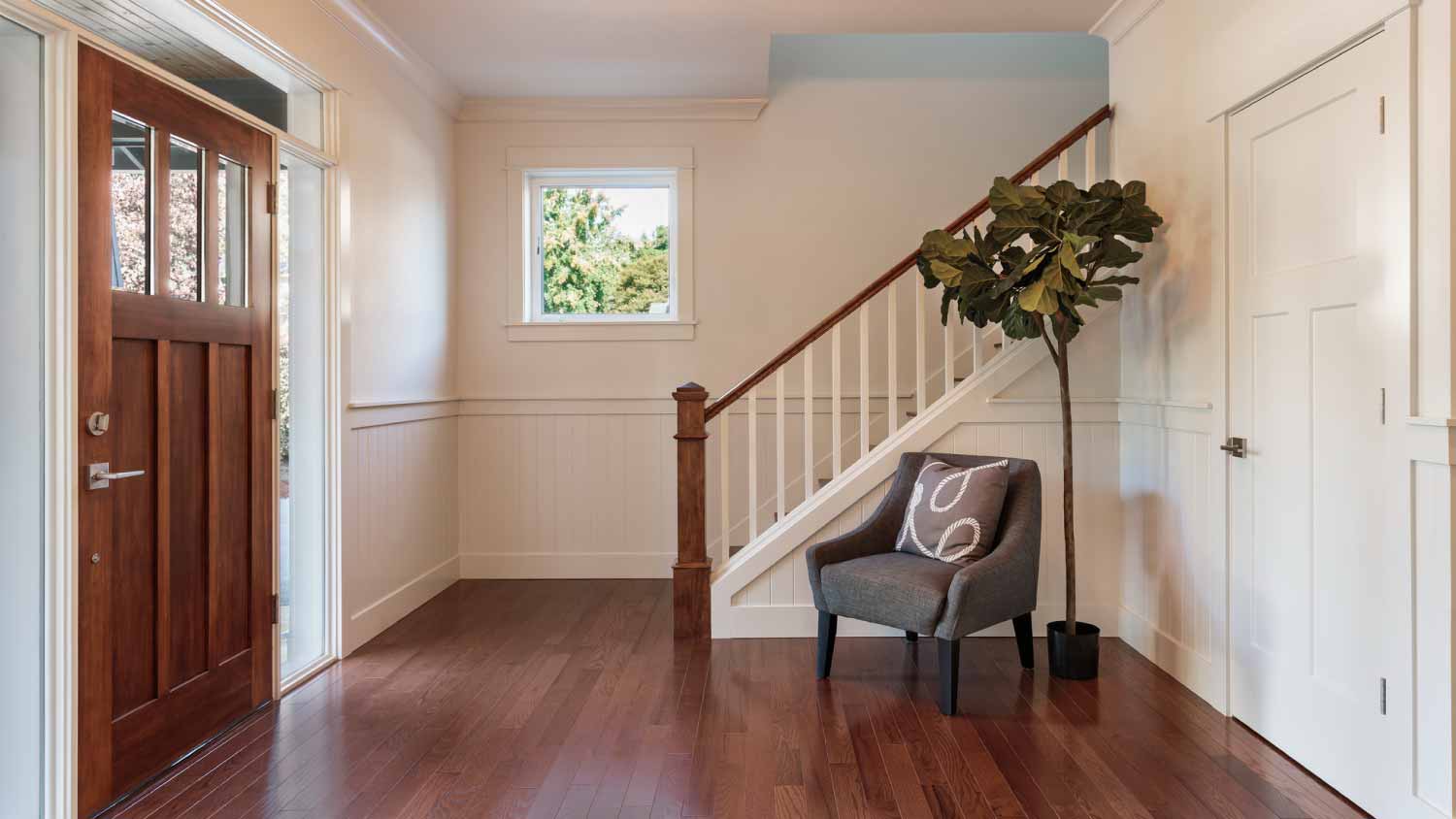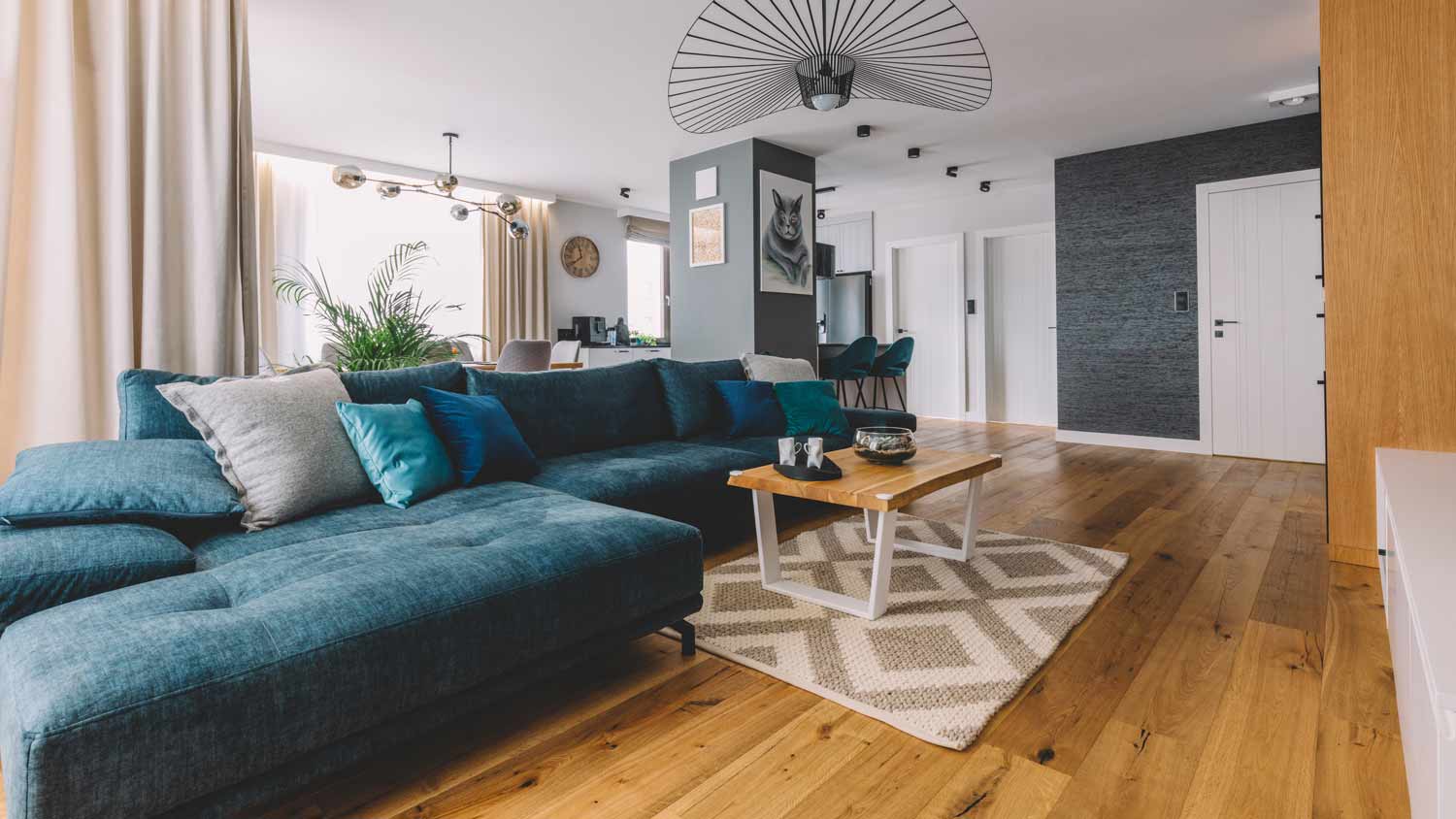How to Repair a Creaking Floor
Because floors should be seen, not heard


- Carpet knife/box cutters (optional)
- Hammer (optional)
- Crowbar (optional)
- 3-4-inch screws
- Plywood (optional)
- Replacement carpet or hard flooring (optional)
- Shim (optional)
Your floors may be one of the first things people notice about your home, but unless you want to keep tabs on a sneaky teenager, you would probably rather your floors be seen and not heard. Lots of things can cause your floors to squeak and creak, though. We’ll show you how to diagnose the problem and repair your creaking floor in a few different ways.
5 Steps to Repairing a Creaky Floor
Find the Source of the Creaking
If your floors creak every time you walk across them, then you probably have an issue with your subfloor. Repairing the creak, though, means first diagnosing the problem. There are several possibilities:
If your subfloor wasn’t properly attached to the joists during installation, then your plywood can pull away from the joists, causing a gap that creates the squeak
Sections of your flooring may be rubbing against one another or against a nail in your subfloor, joists, or surface flooring
Your wood may have dried out, causing it to shift or shrink, which may lead the nails in your joists or subfloor to loosen, resulting in creaky, squeaky gaps
Get a View of the Subfloor
To diagnose the cause of your creaking floor, the first thing you’ll want to do is try to get a look at the subfloor. If you have an unfinished basement and the creaking is on the first floor, you’ll have a clear view from below. Otherwise, to confirm that your underlayment has come loose from its supports and to fix the problem, you probably will have to remove a section of your carpet or hard flooring to expose the subfloor. (If you want to avoid this, though, try step five).
For Carpet
If you have carpeting, you’ll need to cut and re-seam the affected area. You’ll need a carpet knife or pair of box cutters to carefully remove a small square of the carpet around the squeaking area, and you might need to use a bit of muscle to loosen the adhesive. If the carpet has been nailed to the underlayment, you can use the claw end of a hammer to remove them.
Beware though, once you’re done, replacing the carpet takes a bit of skill to conceal the seams and keep your floor looking brand new, according to HomeAdvisor.
For Hard Flooring
If you have hard flooring, use your claw hammer to tackle any nails that may be holding your boards to the underlayment. You may also need to use a crowbar to pry the boards loose. Tread carefully, though, because this can also damage the surrounding boards, meaning you may end up having to replace them as well.
Once you get a look at the subfloor, if you notice any gaps, loose nails or boards, or areas where your floorboards appear to overlap and to rub against one another, against the joists, or against the loose nails, then that’s likely the problem. Or, noted above, your hard surface flooring may also be rubbing against the underlayment. That, too, can create quite a symphony.
Remove, Reglue, and Rescrew a Piece of the Subfloor
Once you’ve gotten down to the subfloor, you have a few options. The first, and most permanent, involves removing the squeaking sections and replacing the subfloor with new boards, taking care to ensure there are no gaps or overlaps between boards, joists, or nails. You’ll want to secure loose boards or nails and, in general, make sure you have a nice smooth, solid subfloor. Then reglue the subfloor to the joists with wood glue and then install new 3- to 4-inch screws, tightly affixing the subfloor to the joists.
Before you replace the floor, though, be sure there are no gaps or loose nails, that the adhesive is dry and secure, and that you have enough screws to attach the subfloor to the joists firmly.
Use a Shim to Fill in Gaps and Stop Creaks
 Photo: irina88w / iStock / Getty Images Plus
Photo: irina88w / iStock / Getty Images PlusIn some cases, you may simply be able to insert a shim into a gap between a joist and the subfloor. A shim is a thin piece of wood that can close the gap between the two and stop any squeaking. If you’re able to access the subfloor below via an unfinished basement or drop ceiling, this can take care of the issue fairly quickly.
Place a shim (or a pair of shims) in between the subfloor and joist gently, careful not to make the gap any larger.
Use Screws Through the Carpet or Hardwood
If you have a lot of areas to repair, or you just don’t have the time or inclination to pull up the floor and expose the subfloor, there’s an easier, if less permanent, solution.
Find the area where there is a creak in the floor and then tap with a hammer or press around it until you locate the joist (this will usually make a noise where other areas will feel more hollow). Then take your 3- to 4-inch screws and screw down through the carpet or hardwood to better secure the plywood of your subflooring to the joists.
If you have wood flooring, make sure that you fill the holes with wood filler once you complete the repair. Trim head screws can be perfect for fixing squeaky floors because the smaller heads can easily be concealed by the carpet or by a special putty that camouflages the screws in your wood flooring.
DIY vs. Hiring a Pro
Depending on the size of the job, you might consider calling in a local flooring company for this particular task. This is especially true if you don’t have easy access to your subfloor and joists, or you’re going to need to take up large sections of your carpet or wood flooring.
You can generally expect it to cost between $200 and $1,000 to repair a squeaky floor according to HomeAdvisor, but the exact cost will depend greatly on the accessibility of the joists and underlayment. If the repairs are minimal and you have easy access to the underlayment, then you can generally DIY it for only the costs of the materials, which can range from $130 for carpet to more than $400 for hardwood.
On the other hand, if the repairs are more extensive, or you don’t have easy access to the underlayment, then you should probably call in a pro. This project can cost $1,000 or more depending on the scope of the repair and the difficulty in accessing the underlayment.

.jpg?impolicy=leadImage)
















